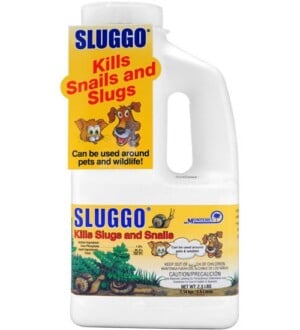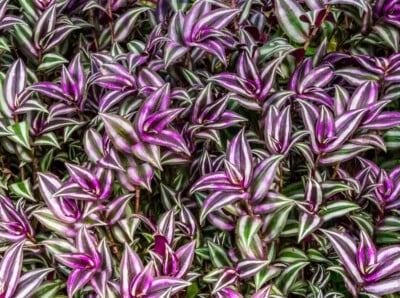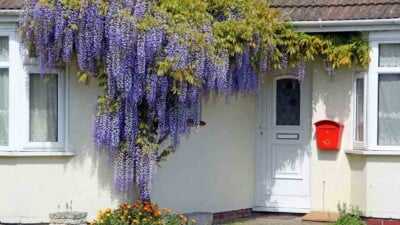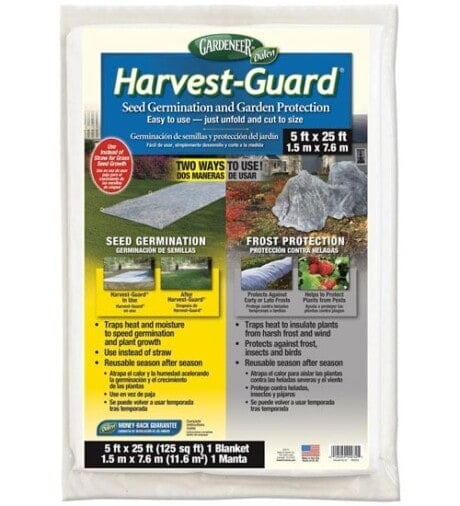Insects Pests
All kinds of bugs, slugs and other thugs can wreak-havoc on your vegetable garden. Here we identify some of the problems and list earth-friendly solutions for dealing with them.


#1 Insect Dust
Available Here
Diatomaceous Earth
Contains diatomaceous earth, a fine powder made from tiny fossilized algae-like plants.
$14.95Learn moreAll gardeners know better than other gardeners. – Chinese Proverb
The best part about organic pest control is that it boils down to doing what comes naturally. Instead of spending a lot of time and effort applying chemical pesticides that destroy all insects, find ways to work with Mother Nature in your vegetable garden. This can mean encouraging beneficial insects that dine on garden pests, building the soil to promote healthy plants and choosing disease resistant crops that are suited to your growing area. After all, long before there were synthetic pesticides, there were gardeners. How did they manage?
Got bugs? At Planet Natural we offer a large selection of natural and organic pest control solutions that are guaranteed SAFE and effective. Also, visit our Pest Problem Solver for pest pictures, descriptions and a complete list of earth-friendly remedies.
On this page I’ve listed several of the more infamous garden pests you may encounter along with common-sense solutions for controlling them. This information is based on advice from Rodale’s Growing Fruits & Vegetables Organically:
Aphids. Tiny (1/16″ to 1/8″) sucking-insects that can be brown, black, pink, white or green. They transmit many viral diseases and attack most herbs, fruits and vegetables. Their calling cards include: foliage that curls, puckers or yellows; stunted growth; sticky “honeydew” which attracts ants and mold. Get rid of aphids by; hosing off plants with a strong stream of water, releasing predatory insects like ladybugs, spraying Safer® Soap and pruning off heavily infested leaves or other plant parts.

IT'S ORGANIC!
Safer Soap
The original insecticidal soap! Concentrated formula makes 6 gallons of spray.
Learn moreApply Safer® Insecticidal Soap every 7-10 days when insects are present, or as needed. Made from naturally occurring plant oils and animal fats, it works by penetrating the protective outer covering of soft bodied insect pests — causes dehydration and death within hours! Leaves behind NO chemical residues and can be used inside or out to kill aphids, mealybugs, spider mites, whiteflies and more.
Cabbage Loopers – Cabbage Worms. Cabbage looper larvae are smooth, green caterpillars with two lengthwise white lines. Imported cabbage worms are velvety green caterpillars. Both worms chew large holes in the leaves of cabbage-family members. Handpick these destructive pests from plants whenever they are discovered and use floating row cover to prevent the adult moths from laying their eggs in your garden. Release trichogramma wasps, a tiny beneficial insect, to destroy eggs before they hatch. Apply Bt-kurstaki while cabbage caterpillars are still small.
Colorado Potato Beetles. The adults are yellowish orange, 1/3-inch beetles with black stripes on their wing covers and black spots on their thorax. Their larvae are small, dark orange, hump-backed grubs. Both adults and larvae chew leaves and are the most important pest to potato crops in the United States. To get rid of potato beetles using organic control options, shake adults onto a ground cloth in early morning and dump in soapy water. Mulch plants early with straw and cover plants with floating row cover until mid-season. Release two to five soldier bugs per square yard of plants to go after the adults and use beneficial nematodes to attack the immature stages. Choose resistant cultivars when possible.
Corn Earworms – European Corn Borers. Corn earworms adults are small, tan-colored moths. Larvae are one-inch to two-inch caterpillars of various colors. European corn borers are brown moths as adults and their larvae are small, beige caterpillars that feed on corn silks and burrow into ears. They also may damage other vegetables. Fall and spring tilling will expose the overwintering pupae to wind, weather and predators. Release trichogramma wasps early, when moths are first noticed. Spray Bt-kurstaki or spinosad to kill young caterpillars. Repeat applications every 4-5 days until tassels turn brown.
A Word About Bacillus thuringiensis (Bt) and GMOs:Bacillus thuringiensis (Bt) is a natural occurring, soil-borne bacteria that has been used since the 1950s for biological insect control. This bacterium produces a protein crystal that when ingested by the pest causes major damage to the digestive system and leads to death. That toxic protein is unique for each subspecies of Bt therefore yielding a variance of Bt toxic to targeted insect species.  OMRI LISTEDBt kurstaki (Bt-k)The most effective least toxic product available for leaf eating caterpillars. $14.95Learn moreRecently, Bt has been questioned for its use as an organic biological insecticide due to its inclusion in Monsanto’s GMO corn and cotton. The differences between the Bt used by organic gardeners (shown here) and that which is genetically inserted into Monsanto’s crops are dramatic. The naturally occurring Bt toxin is produced and regulated within the bacterium versus modified crops which only contains the gene to synthesize the toxic protein. Bt is quickly degraded when exposed to sunlight so by the time the targeted insects are dead, so is the Bt. In modified crops, the synthesized protein remains protected and active throughout an entire season and without crop rotation resistance occurs. Targeted use of Bt products for insect control on properly managed plots have not resulted in insect resistance. When used appropriately Bt continues to be effective on cabbage worms, tent caterpillars, potato beetles, mosquitoes, black fly and a variety of other insect pests. |
Cucumber Beetles. These one-quarter-inch, yellowish beetles have either black spots or lengthwise stripes. Larvae are small, whitish grubs. Cucumber beetles chew flowers and leaves of squash-family and other plants. Larvae feed on corn or squash-family roots. Both adults and larvae spread the mosaic virus and bacterial wilt. To control, inspect plants frequently and handpick any beetles that are found. Treat soil with beneficial nematodes. Apply floating row cover before beetles appear to prevent transmission of disease. Spray adults with botanical insecticides. Remove garden debris shortly after harvest to reduce overwintering sites.

FREE SHIPPING!
Beneficial Nematodes
These tiny, worm-like parasites hunt and destroy over 230 different pests.
$37.95Learn moreCombat more than 230 different pests including fleas, fungus gnats, black vine weevils and white grubs with Scanmask® Beneficial Nematodes (Steinernema feltiae). These worm-like, microscopic parasites actively hunt, penetrate and destroy insects in and on the soil and those that bore into wood, trees and shrubs. Will NOT harm people, pets, plants or earthworms and will continue working for 18 months. Each pint treats 285-550 square feet, or 1,050 4-inch pots.
Cutworms. As adults they are brown or gray moths. Their larvae are fat, greasy, gray or dull-brown caterpillars with shiny heads. Cutworm caterpillars feed on the stems of many vegetables near the soil line, severing them or completely consuming small seedlings. Use collars made of paper, cardboard (toilet paper tubes work great) or plastic around stems and anchor at half above and half before the soil line. One week before setting out plants, scatter moist wheat bran mixed with Bacillus thuringiensis var. kurstaki (Bt) and molasses over the surface of vegetable beds. Apply beneficial nematodes to the soil. Handpick caterpillars after dark. Also, set transplants out later in the season to avoid damage.
Flea Beetles. Found early in home gardens, flea beetles are tiny, dark insects that jump like fleas and chew small holes in the leaves of crops. Larvae are tiny, white grubs that feed on plant roots. Crops may be stunted or killed. Delay planting to avoid peak populations. You can also cover seedlings with row cover and treat the soil with beneficial nematodes. For severe infestations, spray botanical insecticides (pyrethrin) as a last resort.

Slugs and Snails. Adults are soft-bodied, worm like creatures. Slugs have no shells while snails have coiled shells. Both slugs and snails leave a trail of mucus when they travel and chew large holes in foliage, stems and bulbs. They feast on any tender plant or shrub and may cause extensive damage to seedlings. To control, use copper flashing as an edge for garden beds. You can also trap them under flowerpots or boards or try shallow pans of beer. Collect and destroy them every morning. To encourage predatory ground and rove beetles, grow clover, sod or use stone mulch along your garden’s walkways. Protect seedlings with wide bands of cinders, wood ashes or diatomaceous earth.

ORGANIC SLUG BAIT
Sluggo
Effective against snails and slugs, yet is non-toxic to wildlife, people and pets.
$18.95Learn moreContaining a unique blend of iron phosphate, Sluggo® Organic Slug and Snail Bait kills snails and slugs, yet is non-toxic to wildlife, people and pets. Apply evenly at about 1 lb per 2,000 square feet. Re-apply as bait is consumed. OMRI Listed for use in organic production.
Spider Mites. Adults are tiny eight-legged mites. Nymphs are similar in appearance, but are smaller than adults. Adults spider mites and nymphs suck plant juices from many food crops. Early damage will show as yellow-specked areas on leaf undersides. Adults may spin fine webs. Rinse plants with water and mist daily to suppress reproduction of mites. Release predatory mites such as Phytoseiulus persimilis or similar species on vegetables. If pest populations are high, use least-toxic, short-lived botanical insecticides (neem oil, pyrethrin) first to establish control.
Squash Bugs. Widely distributed in North America, squash bug adults (5/8 inch long) are brownish-black in color and flat-backed. Nymphs are whitish green or gray when young, darkening as they mature and spider-like in appearance. Both adults and nymphs suck plant juices on all squash crops which causes leaves and shoots to blacken and die. Hand pick all stages of squash bugs from the underside of leaves. Support vines with trellises to keep them off the ground. Attract native parasitic flies with pollen and nectar producing plants. Cover plants with floating row cover and spray with botanical insecticides if pest levels become intolerable.
Tomato Hornworms. One of the most destructive pests of tomato, potato, pepper, eggplant and tobacco plants. Adults are large, gray moths (4-5 inch wingspan). Larvae are green caterpillars (3-4 inches long) with a red or black horn on the tail. The tomato hornworm consume entire leaves, small stems and sometimes chew pieces from fruit. To control, handpick caterpillars from foliage. Attract native parasitic wasps and other beneficial insects to your garden for long-term control. Spray Bacillus thuringiensis var. kurstaki (Bt-k) while caterpillars are still small. Roto-tilling after harvest destroys overwintering pupae in the soil.

















